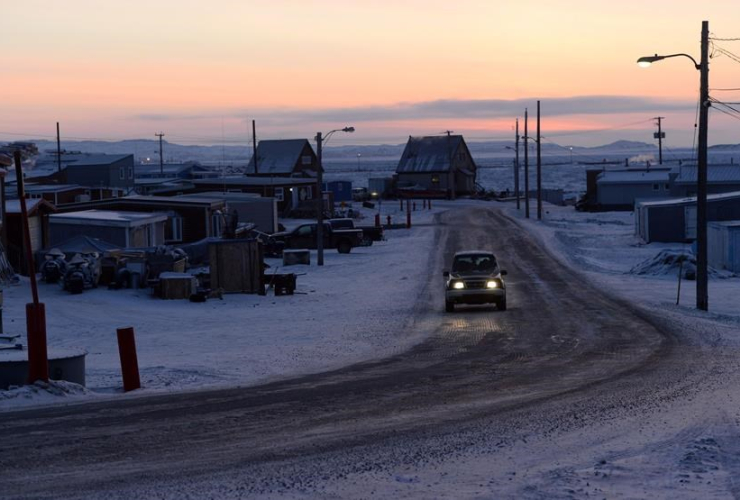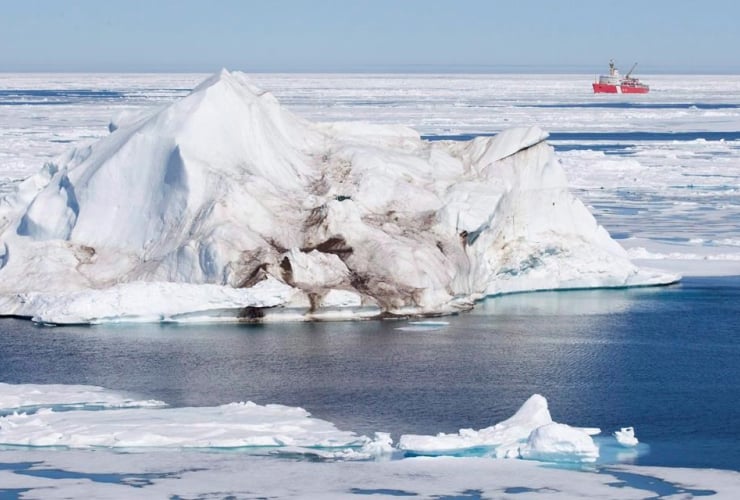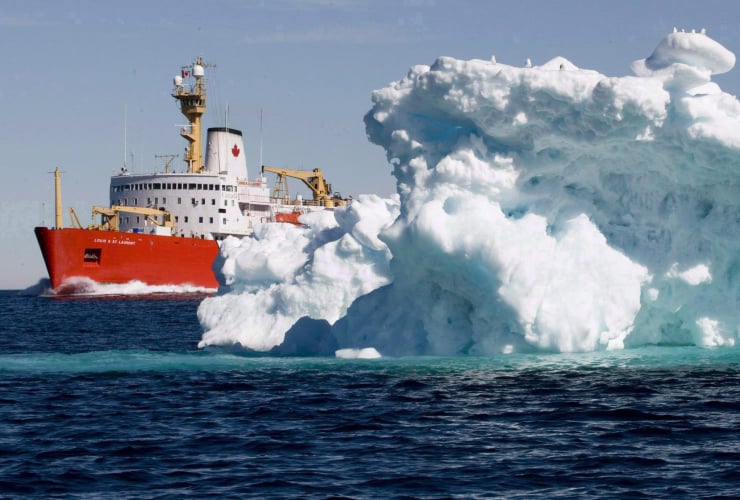The Canadian Coast Guard says three "interim" icebreakers that were recently purchased without a competition will be used for the next 15 to 20 years.
Coast guard officials revealed the timeframe in interviews with The Canadian Press while playing down concerns about the state of their aging fleet — and the challenges in building replacements.
The government in August agreed to sole-sourcing the purchase of three used icebreakers from Davie Shipbuilding for $610 million, saying a stop-gap was needed until replacements could be built.
The deal represented a win for the Quebec-based shipyard, which had been lobbying hard for additional federal work, and should ease pressure on the coast guard's icebreaking fleet.
The coast guard's existing vessels are on average more than 35 years old and have lost hundreds of operational days over the past few years due to mechanical breakdowns.
Yet there are no immediate plans to replace them; the government's multibillion-dollar shipbuilding plan includes only one new heavy icebreaker, which won't be ready until the next decade.
Deputy Commissioner Andy Smith, who is overseeing the shipbuilding plan for the coast guard, said the service is instead in the midst of extending the life of its current fleet another 20 years — during which it will rely on the Davie ships to fill any gaps.
"The icebreakers that we recently purchased were envisioned to backfill behind those various ships as we put them into a refit or an extended maintenance period," Smith said in an interview.
"And we have mapped that out over 20 years."
Deputy Commissioner Mario Pelletier, who is responsible for coast guard operations, confirmed that time period in a separate interview, saying: "I would expect that we're going to have them for 15, 20 years.
"The urgent need is just to make sure we do have a surge capacity to backfill when those ships come out of service," he added.
While few would argue the need for additional icebreakers, the timeline has nevertheless resulted in fresh criticism of the country's procurement system — and questions about the shipbuilding plan.
The federal government previously purchased "interim" icebreakers in the 1980s and those vessels are still in use, said Rob Huebert, an expert on the Arctic at the University of Calgary.
That, plus the absence of any real plan to replace the majority of the coast guard's icebreakers, leads Huebert to believe the three Davie ships will eventually become part of the permanent fleet.
"What's going to happen is we have been overworking our three medium icebreakers and those three (Davie ships) will replace them even though no one is saying they're replacing them," he said.
The two Canadian Coast Guard officials both insisted that the Davie deal would not undercut the shipbuilding plan, through which Vancouver Shipyards is building several coast guard ships.
Those include three fisheries-science ships, an ocean-science vessel and a heavy icebreaker, in that order. Two naval support ships will be built between the ocean-science vessel and the icebreaker.
But defence analyst David Perry of the Canadian Global Affairs Institute wondered whether calling the Davie deal an "interim" measure was intended to sidestep the plan — and any legal trouble.
Either way, he said, the arrangement only underscores many of the enduring issues facing Canada's troubled procurement system and the long amount of time it takes to buy new equipment.
"If they're defining an interim period being up to 20 years, only in Canada is that considered an interim basis," he said, noting that the shipbuilding plan is already years behind schedule.
"Only in a country where you run things for 40-plus years is two decades a temporary solution."
Smith and Pelletier said the current coast guard fleet is nonetheless in good shape and that there are positive signs of progress at Vancouver Shipbuilding, despite some hiccups.
Those included a welding problem discovered on the three fisheries-science ships that has pushed back delivery of the first of those vessels until next year.
The design and budget for the ocean-science ship also remains up in the air, while the construction schedule for the navy support ships and heavy icebreaker remain in limbo.
"It's really a dynamic time as we look to regrow the whole ecosystem of shipbuilding in this country, and they are in various stages of design and construction," Smith said of the challenges.
"So that whole ecosystem is being rebuilt."
And I suppose the government
And I suppose the government's reasoning is that after another 20 years, there likely won't be enough Arctic ice left - at any time of year - for Canada to even need purpose-built icebreakers any more...
That's a pretty sad thought, I know.





Comments